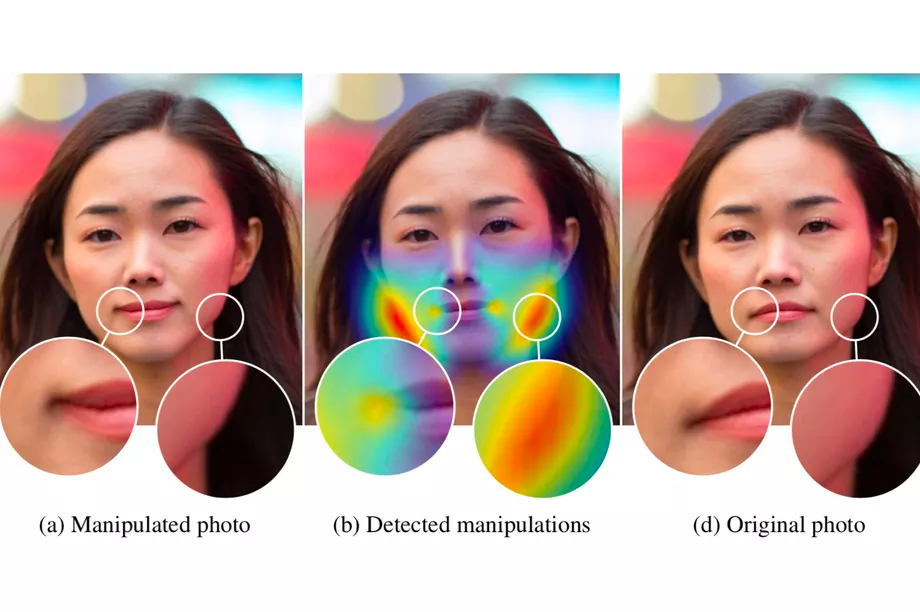Adobe builds a tool to spot digitally manipulated photos

Adobe shared a new research project in collaboration with University of California, Berkeley on Friday, revealing a tool that can detect digital manipulation in photographs and videos, The Verge reports.
Designed to spot Photoshop's edits, the research focused on the Liquify tool — used to adjust the shape of faces and alter facial expressions. Because the feature can make changes that are soft and imperceptible, Adobe started a series of tests to detect both drastic and subtle image alterations. Using machine learning, researchers created tool that correctly identified altered images 99 percent of the time, compared to the human eye's 53 percent success rate.
"While we are proud of the impact that Photoshop and Adobe's other creative tools have made on the world, we also recognize the ethical implications of our technology. Fake content is a serious and increasingly pressing issue," the company told The Verge.
The Week
Escape your echo chamber. Get the facts behind the news, plus analysis from multiple perspectives.

Sign up for The Week's Free Newsletters
From our morning news briefing to a weekly Good News Newsletter, get the best of The Week delivered directly to your inbox.
From our morning news briefing to a weekly Good News Newsletter, get the best of The Week delivered directly to your inbox.
Although the research is promising and aims to stop the potentially harmful effects of manipulated media, Adobe has no immediate plans to turn the work into a commercial product, rather, the tech giant is using the project as one of "many efforts across the company to better detect image, video, and audio document manipulation."
A free daily email with the biggest news stories of the day – and the best features from TheWeek.com
-
 Tea with Judi Dench: ‘touching’ show is must-watch Christmas TV
Tea with Judi Dench: ‘touching’ show is must-watch Christmas TVThe Week Recommends The national treasure sits down with Kenneth Branagh at her country home for a heartwarming ‘natter’
-
 Codeword: December 24, 2025
Codeword: December 24, 2025The daily codeword puzzle from The Week
-
 Sudoku hard: December 24, 2025
Sudoku hard: December 24, 2025The daily hard sudoku puzzle from The Week
-
 LA County reportedly set to pay $2.5 million in settlements over Kobe Bryant crash photos
LA County reportedly set to pay $2.5 million in settlements over Kobe Bryant crash photosSpeed Read
-
 The horrific scene at Kabul's airport, in 14 photos and videos
The horrific scene at Kabul's airport, in 14 photos and videosSpeed Read
-
 Report: Matt Gaetz's former wingman has given investigators thousands of photos, videos, and texts
Report: Matt Gaetz's former wingman has given investigators thousands of photos, videos, and textsSpeed Read
-
 FBI used 'provocative' photos of female staffers as bait in sex trafficking stings, report finds
FBI used 'provocative' photos of female staffers as bait in sex trafficking stings, report findsSpeed Read
-
 Before Florida condo collapse, contractor took photos of damage in building's garage
Before Florida condo collapse, contractor took photos of damage in building's garageSpeed Read
-
 Gun-toting protesters' dramatic stand inside Michigan's statehouse, in 5 photos and videos
Gun-toting protesters' dramatic stand inside Michigan's statehouse, in 5 photos and videosSpeed Read
-
 L.A. County sheriff ordered 8 deputies to delete graphic photos of Kobe Bryant crash
L.A. County sheriff ordered 8 deputies to delete graphic photos of Kobe Bryant crashSpeed Read
-
 Vanessa Bryant 'absolutely devastated' by report deputies shared photos of Kobe Bryant crash
Vanessa Bryant 'absolutely devastated' by report deputies shared photos of Kobe Bryant crashSpeed Read